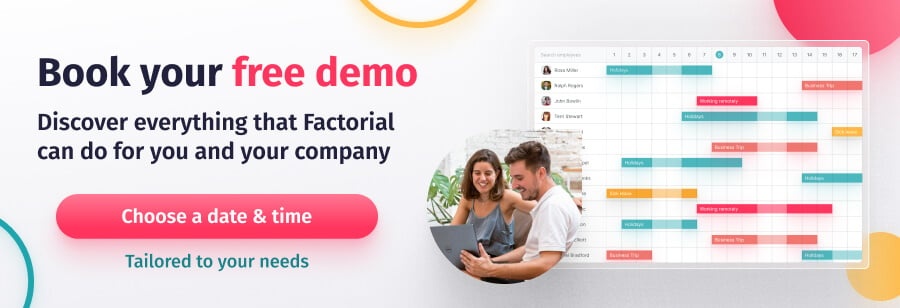A career portfolio is a curated display of someone’s work used to exhibit their skills and expertise.
This article explains how to make a career portfolio and provides examples. It also differentiates between a career portfolio and a portfolio career.

What is a Career Portfolio?
A career portfolio, also known as a ‘job portfolio’ or ‘professional portfolio’, is a collection of someones work displayed in way that showcases their professional skills and work ethic. In contrast to a CV, a professional portfolio uses examples from projects to demonstrate a person’s achievements, providing evidence of their abilities.

Only certain types of roles and industries require a career portfolio. Usually, they work best for creative areas such as copywriting, web design and video production and more due to the nature of the work; output often matters more than experience or formal training. Most employers will expect to see samples before hiring or as part of the recruitment process for both freelance and contracted employment.
What is a Portfolio Career?
A portfolio career is slightly different. This is when employees take on multiple jobs to expand their experience and breadth of work – in other words, side hustles. According to People Management, more and more people are opting for portfolio careers, with two-thirds of UK workers now doing various jobs. Participants in the study cited ‘expanding skills’ and ‘gaining experience’ as key reasons behind their decision.
What to Include in a Career Portfolio
It can be tough to decide what to include in a career portfolio, and building a career portfolio doesn’t happen overnight. You must be brutal when curating your work and choosing between projects to feature. There are, however, a few key elements that should always be included:

A brief synopsis
Sum up your career and portfolio in a few paragraphs. This should be brief and only give a topline summary of your professional life to date. You can go into greater detail in other parts of your job portfolio. Here, you can also include a bit of a mantra about how you like to work—for example, a catchy one-liner like “Elevating brands through captivating visuals and creative storytelling.”
A timeline
Provide a professional biography with dates to inform employers where you have worked previously. LinkedIn has a feature that allows you to allocate skills on your profile to specific positions. This could be a nice touch for a career portfolio, too.
Relevant attributes and skills
Think about soft and hard skills. Which software can you use? Which soft skills can you demonstrate, such as leadership or problem-solving?
Your biggest accomplishments
Summarise projects you’ve worked on that have had an impact and give quantifiable results. Pose each one in the STAR framework: situation, task, analysis, and result. In other words, what problem were you trying to solve, how did you plan to do this, and how did your work lead to the desired outcome? If your work has gained awards, this is the place to call them out.
Key samples of your work
This is the crux of your career portfolio. You don’t necessarily need to include everything you’ve ever worked on. Focus on the highlights that have either driven tangible results or demonstrated a wider breadth of skills. Each piece should be accompanied by a summary of the client, the objective of the piece and any metrics that prove its impact.
Testimonials
It’s less common for career portfolios to include testimonials, but social proof is one of the most effective ways to drive trust and encourage purchase. Businesses that quote testimonials on their website see a 34% increase in conversions; why can’t we apply the same logic to employers looking for workers?
How to Make a Career Portfolio
What stumps a lot of candidates is how to create a career portfolio. During the creation stage, you want to select bits of work, thinking carefully about:
- Which have earned you testimonials?
- Which have led to quantifiable results?
- Which demonstrate the widest breadth of skills?
You can then use a website builder to present your pieces. Here are a few favourites:
Career Portfolio Examples
Before you start building, looking at career portfolio examples for inspiration can be helpful, as there are countless ways to format your job portfolio.
Sam is a copywriter with a strong portfolio of work. But what makes it so impressive? First off, he has a clear and engaging career portfolio cover page that makes you want to click instantly! He then makes his campaigns the focus. Under each, he explains key information about the client and the project. It’s simple but effective.
Luke is a graphic designer with a wide range of animated projects under his belt. Similarly to Sam, he leads with visuals, which is an effective way to drive engagement from the get-go. He includes links to his social media, which is a great idea if your profiles showcase your work – it allows potential clients/employers to see your work in the wild!
Hana is a product designer that crafts websites – well. She leads with her mission statement, which is a powerful way to explain your brand. This ensures the clients that reach out match your niche and will add value to your portfolio. Her website is personal and really paints you a picture of how it would be to work with her.
FAQs
What is a career portfolio?
A career portfolio is a comprehensive collection of work showcasing an individual’s professional journey, achievements, skills, and aspirations.
What do you write in a career portfolio?
A career portfolio typically includes a CV, work samples, certificates, and awards that demonstrate the person’s qualifications and capabilities.
What are 5 parts of a career portfolio?
Five key components of a career portfolio are a professional resume, work samples or projects, educational credentials, references or testimonials, and a career development plan outlining future goals and strategies.
What are examples of portfolio careers?
Examples of portfolio careers include freelancing in multiple fields, combining part-time jobs in various industries, entrepreneurial ventures in different sectors, and pursuing artistic and professional endeavours simultaneously.



